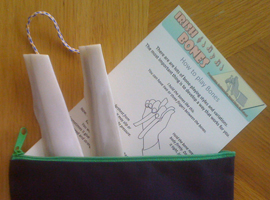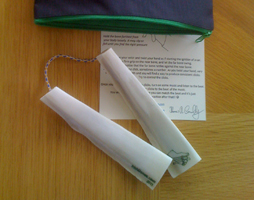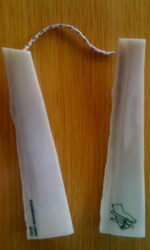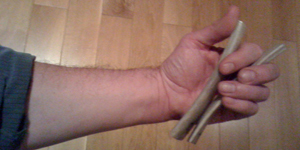|

History - Irish Bones
Bones are reputed to be the second-oldest instrument in the world, next to the human voice. According to Wikipedia "The technique arrived in the U.S. via Irish immigrants...". Aaron Plunkett, a renowned percussionist, played bones in the movie "The Titanic" down in the hold where the Irish immigrants were. Bones are mentioned by the famous Listowel writer John B. Keane in his book "The Bodhrán Makers" published in 1986, where he describes a band of musicians, including a group of bones players, making the traditional Wren Boy tour of their locality on St. Stephen's Day, going from house to house and stopping at crossroads giving impromptu concerts, collecting a few shillings from happy listeners to fund a "Wrendance" later in the month. Some famous Irish bands featured bones players - De Danaan (Johnny "Ringo" McDonagh), The Chieftains, Stockton's Wing (Tommy Hayes) and one of the best modern-day bones players, Mel Mercier, is head of music in University College Cork.
Rhythm bones feature in many other cultures and countries as well as Ireland. Bones are said to have been played in ancient Egypt, Greece, Rome, and China as far back as 3000 BC. There is a lot of information on the web about bones around the world. Our friendly site Wikipedia reports that bones "have contributed to many music genres, including 19th century minstrel shows, traditional Irish music, the blues, bluegrass, zydeco, French-Canadian music, and music from Cape Breton in Nova Scotia."
Two sites worth checking our are www.world-beats.com/rhythmbones (where you can read about Aaron Plunkett, who played bones in the film "The Titanic") and www.rhythmbones.com , the website of the Rhythm Bones Society which had it's early beginnings in North Carolina USA in 1997 and was formally set up in 1999 in Virginia, USA. The Society runs an annual "Bones Fest".

How Bones are made
Bones are made from many materials, not just bone. Many types of hardwood can be used, and some have even been made from plastic. The real bone bones are normally made from rib bones of beef or lamb, and sometimes from horses, and also from the shin bones of goats. IrishBones.Com bones are made from beef ribs, collected from local butchers and from a factory in Cork which takes all its animals from surrounding farms and bears the Guaranteed Irish symbol.
Methods of making bones vary greatly and continually evolve. How I do it is:
Step One.
Choose carefully. Not all bones are suitable. You need reasonably thick bone, a gentle curve, and you need the bone to be "closed" properly. Some rib bones are very thin and the marrow comes out to the very edge of the bone. Some ribs are too thick, some too curved. Depending on the sound you want, you learn how to choose the best bones with experience. Longer heavier ribs are best for strident slow basic beats. Smaller lighter bones are ideal for fast reels and polkas and for complex rolls.
Step Two.
Boil. This gets rid of all the meat and gristle attached to the bone. Sometimes an hour will do, sometimes you need three hours.
Step Three.
Hollow out the marrow. Some people leave the marrow in and seal the ends. I much prefer to hollow out as much marrow as I can, as the resultant range of sounds is beautiful. I am still trying to work out the best way to completely remove the marrow. Mostly I remove about an inch of marrow from each end of the bone then seal the rest. This produces a nice hollow sound but also retains weight in the middle which helps the action.
|






